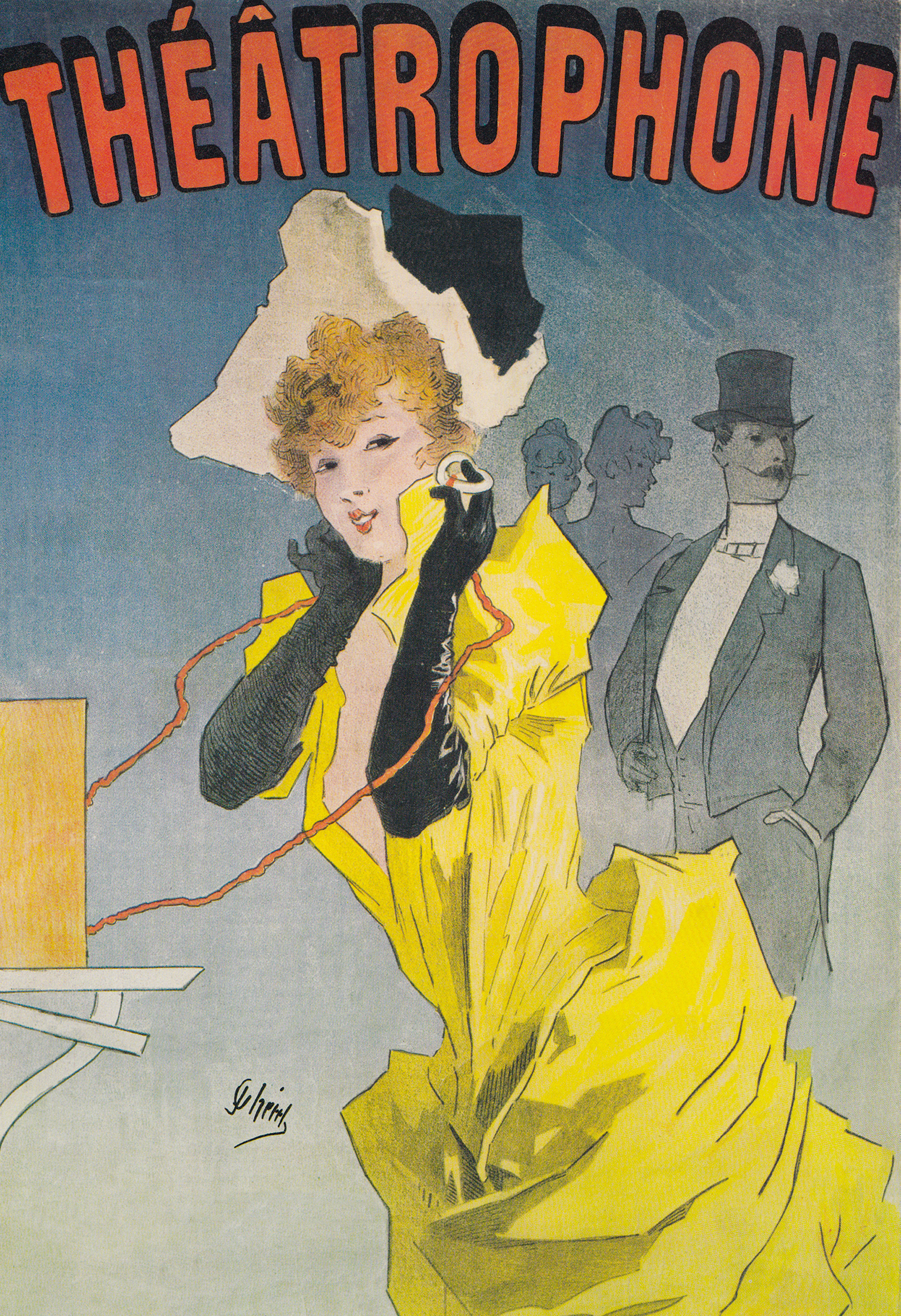Musical Wires
Listening to the Théâtrophone
Lev Bratishenko
The British inventor Charles Wheatstone liked to impress guests with performances of the “acouryptophone,” an “enchanted lyre” hanging from the ceiling that he made a show of winding up. It worked because the suspending wire was attached to the soundboard of a piano on the floor above; an accomplice played, and sound resonated through the wire. Wheatstone’s invention, which he showed publicly until at least 1823, as well as his later work, led to speculation about the feasibility of a device to transmit music across greater distances:
Who knows but by these means the music of the opera performed at the King’s Theatre may ere long be simultaneously enjoyed at [the] Hannover-square Rooms, the City of London Tavern, and even at the Horns Tavern in Kensington.[1]
This would, in fact, happen; it just took longer than expected. By 1848, the editors of Punch imagined an “opera telakouphanon” that would serve homes “with the liquid notes of Jenny Lind as easily as they are with soft water.”[2] Still too early, but live soprano on tap, that’s good. That’s got something.
It was only with the invention of the telephone that a system for long distance musical plumbing became practical, and music was played on the telephone almost immediately. Alexander Graham Bell’s demonstration to Queen Victoria at Osbourne House in 1878 included a song that she heard “quite plainly.”[3] We would call it plain in another sense too—the quality of early telephony was so poor that music, which is louder and more forgiving of distortion, transmitted better than voice. As late as 1900, readers of The Phonograph and How to Use It were instructed to “avoid singing with too much expression.”
Early microphones and speakers had many design limitations, but the low quality was also a function of rudimentary circuitry. The first telephones used telegraph wires, single-strand iron wires grounded in the earth; the higher quality metallic circuit, patented by Bell in 1881, was not common in telephones until the 1890s. Earth-grounded circuits add noise to telephone conversations because the ground is shared with machinery, electrical lines, and natural earth currents, while a metallic circuit uses two wires, still made of iron at the time, for the circuit and thus reduces interference (copper was introduced for long-distance conversations starting in the 1880s).

Telephone and telegraph operators were among the first to hear experiments in musical broadcasting. The Virginia engineer and telegraph manager C. E. McCluer recounted one such adventure on the “far speaker” from 1876. He regularly listened to ground static on his earth-grounded, private experimental telephone line: